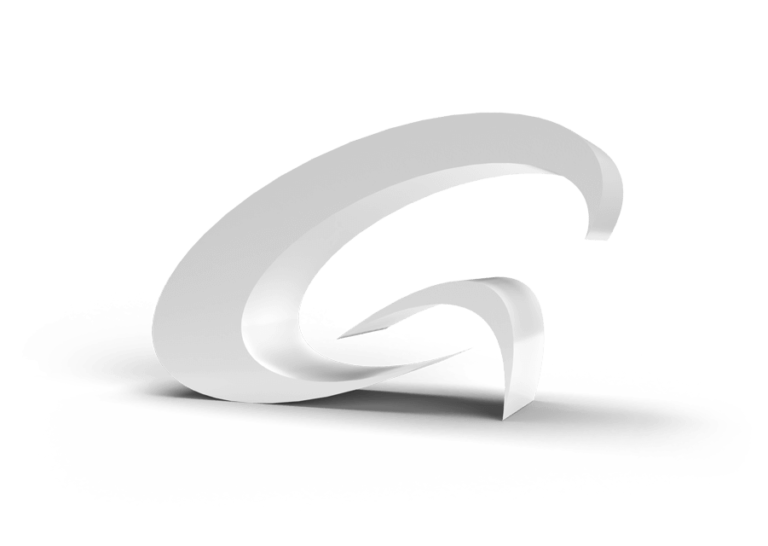Article
Uncover the hidden benefits of rental-with-equity programs and learn how to turn your lab’s dreams into reality.

So, you have an unknown sample sitting on the lab bench. It’s waiting to be run on the GC-MS, maybe one with a pyrolyzer on it. The sample might be a mystery, but what is certain is that data interpretation is in your near future.
Despite having access to the best instruments at your disposal, good data still requires the keen eye of an analyst. And moreover, understanding the common analytical techniques for identifying unknown samples will come in handy.
But before we list the analytical techniques for characterizing unknowns, let’s offer a little background:
A peak on a chromatogram represents an analyte. When this analyte passes through the mass spectrometer (MS), it fragments in a unique way. The resulting fragmentation pattern is represented by its mass spectrum, which can be searched in a database, or library, full of known spectra. Then, the software that runs these library searches offers potential compounds that match or closely match your unknown and lists them in order of how closely they match.
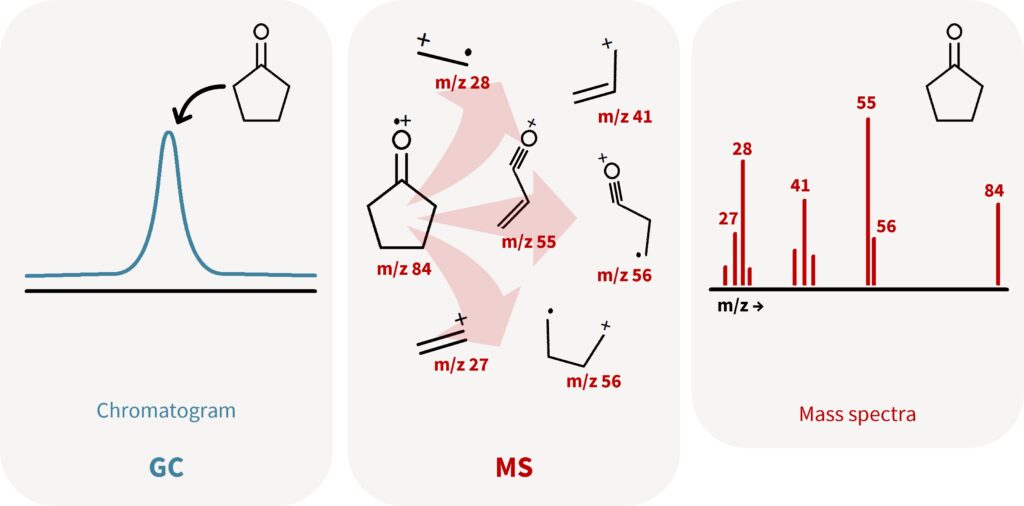
But what about pyrolysis? When a sample in pyrolyzed, it breaks down into smaller molecules, or pyrolyzates, before going through the GC. One sample may have a mix of polymers and additives, all of which are breaking down before further fragmenting in the MS. In a complex sample composed of different things, it can be harrowing to hunt down what each pyrolyzate is, and what compound the pyrolyzate came from.
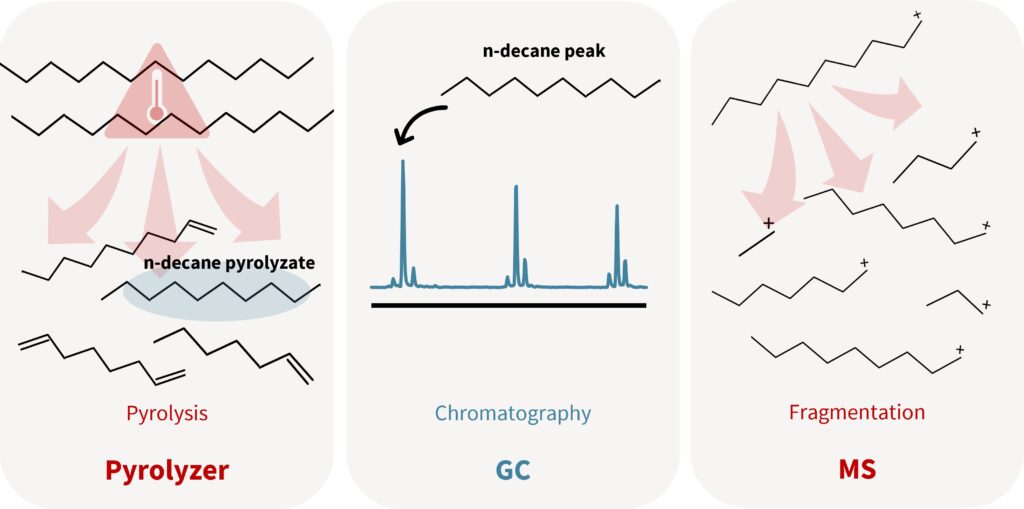
It would make sense to have a library of additives and polymers and how they break down in the pyrolyzer. This, combined with some general functions needed to interpret spectra, is encompassed in F-Search and the respective polymer and additive libraries.
In this article, we’ll outline each of the 5 analytical techniques for characterizing unknowns, plus offer tips on how they can be adapted to pyrolysis data.
It’s easy to blindly trust the top match when you search an unknown. That’s because in most cases, the first match is a good match. However, matches can be affected by things, like background noise or contaminants. We expect that most of the compounds found should make sense, knowing the sample they came from. However, if the top match doesn’t feel right, look at the other matches or try a different database.
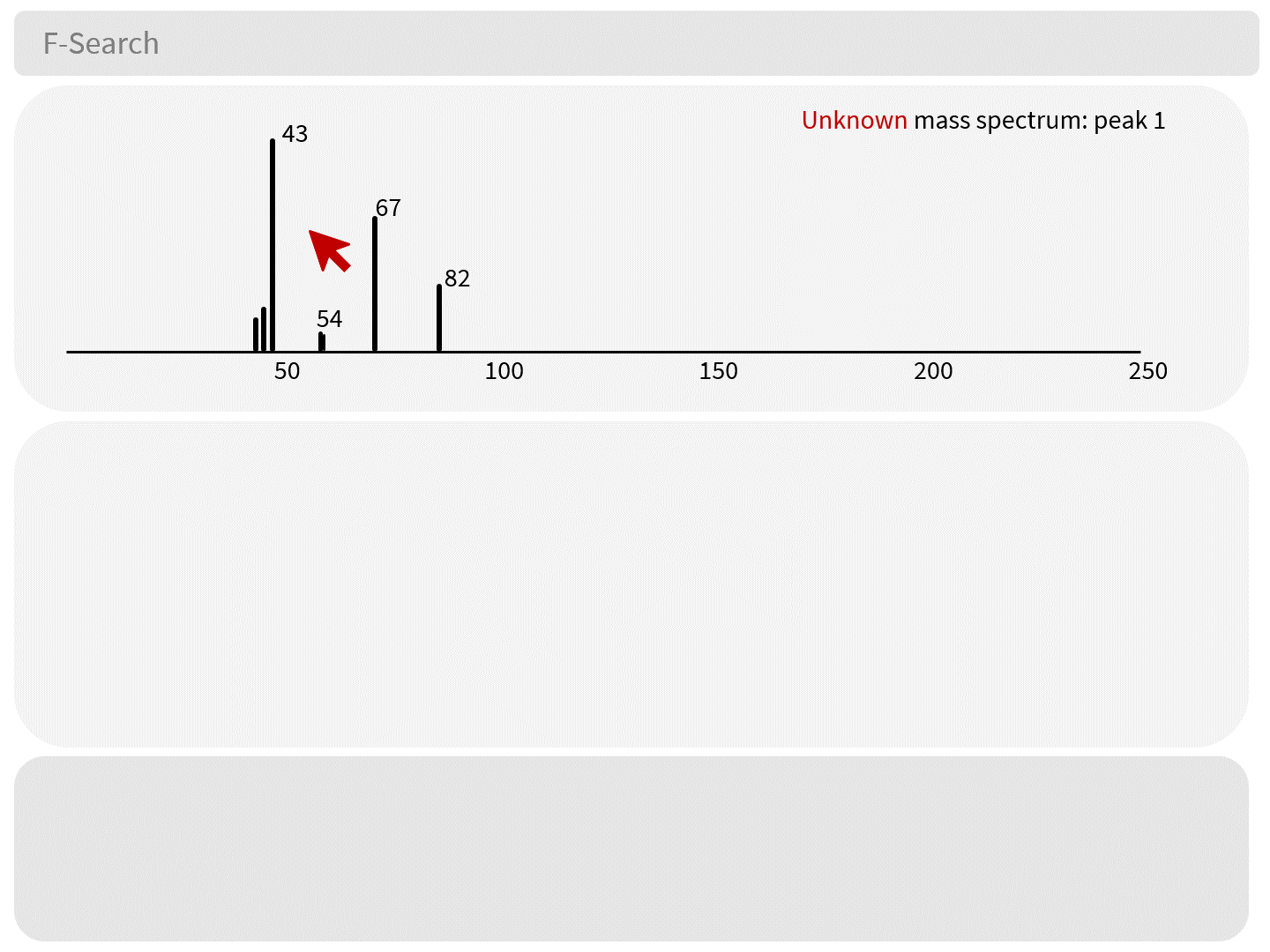
Quick Tip! You can integrate and run NIST library searches from the Frontier F-Search engine.
One analytical techniques for characterizing unknowns is running a reference. References are known samples used to compare to an unknown. Reference material can be polymer with little additives, or a resin deemed “good” by quality control. They can also be the additives themselves.
As an example, we ran a leather sample against a bovine collagen peptide reference. As leather is mostly collagen, any additives in the leather became obvious when compared to neat collagen. References can not only be used to compare data, but they can also be run and stored in your own user library.
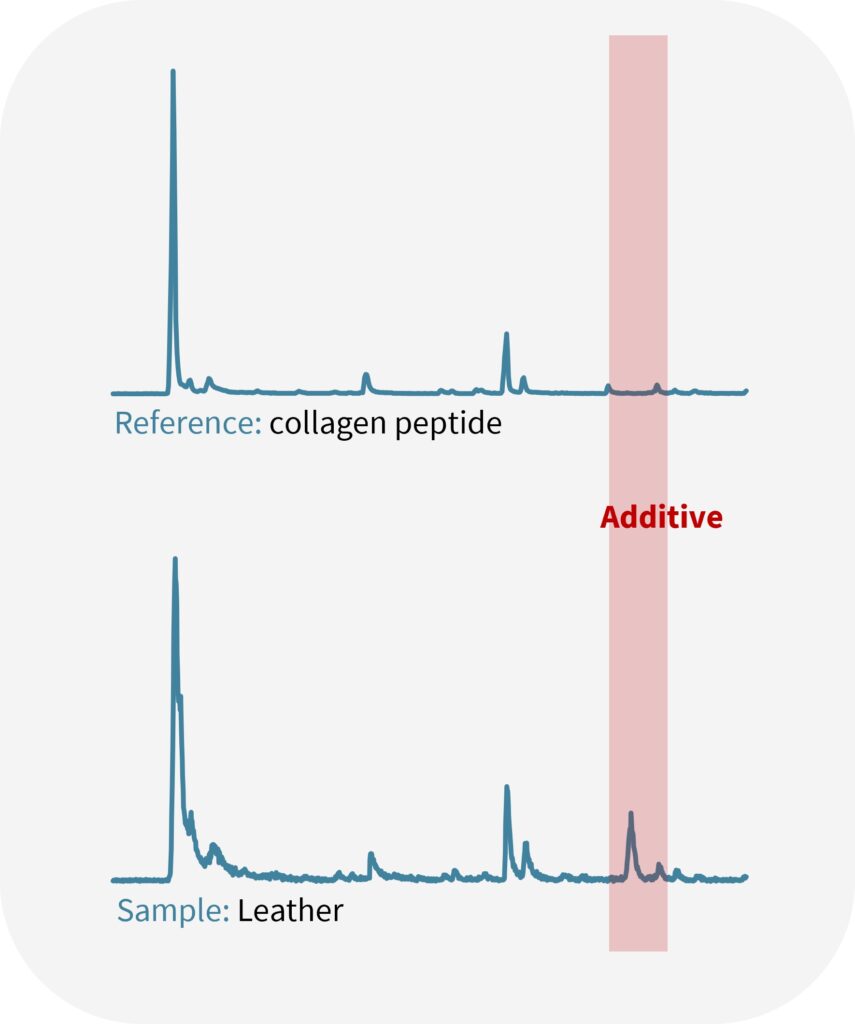
Quick Tip! Running your own production resins and additives can be very helpful. Any data you run can be saved in your own user library which you can use later as another library database to search unknowns.
Subtracting background can clean the mass spectrum of unwanted noise for better library matching. Background subtracting can also be used to deconvolute peaks or remove contaminant peaks.
In our example, we have (1) EGA data with two different polymers in them. The mass spectrum of one polymer is subtracted to reveal the other. (2) A sample with siloxane contamination introduced during sample prep. The mass spectrum of each contaminant peak was subtracted from the total chromatogram to leave only the peaks of interest. (3) Bleed from a PEG column is subtracted out.
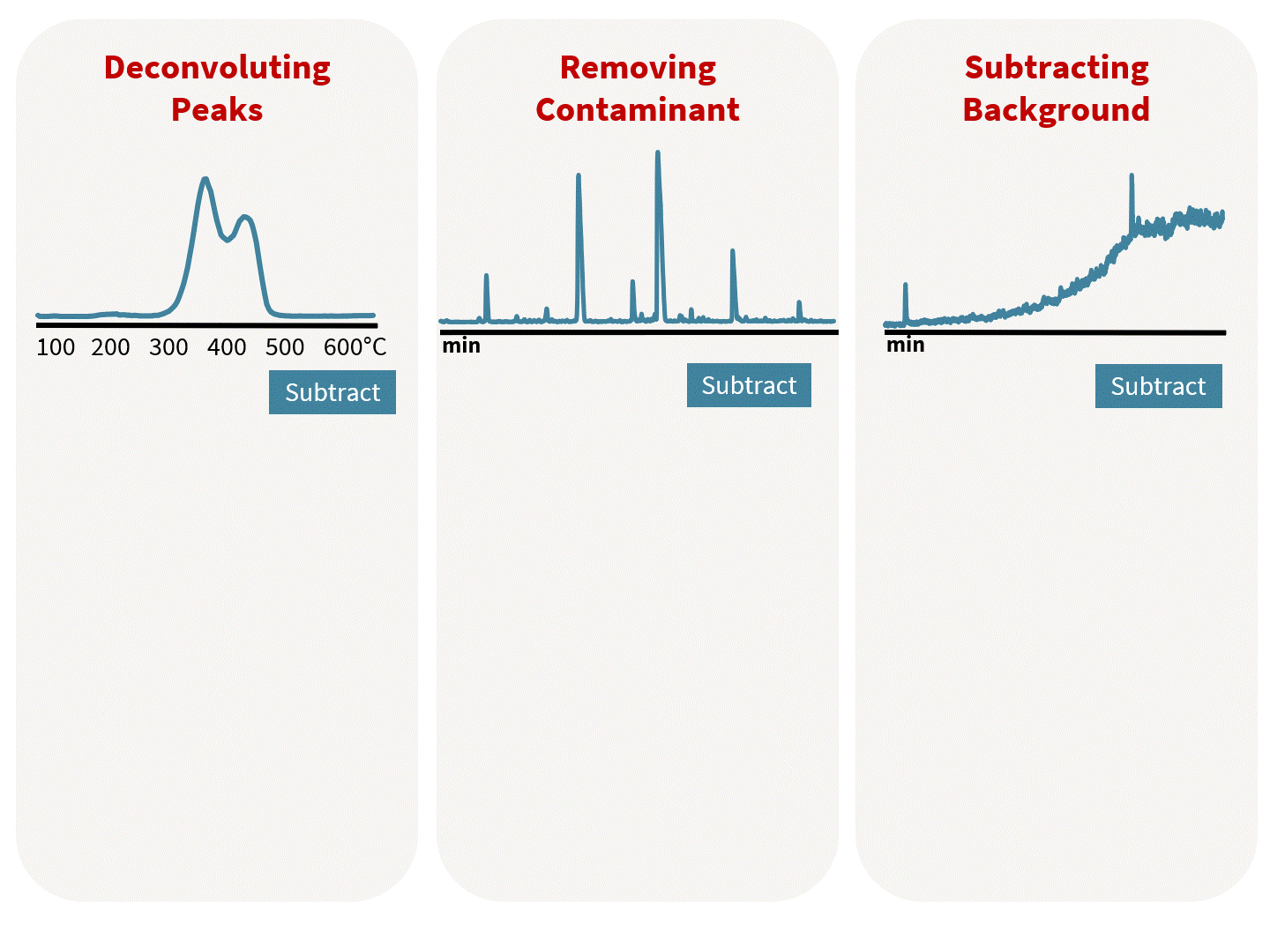
Quick Tip: You can drag across an area of baseline or across a peak when subtracting background. You can also subtract background multiple times.
Being able to search and match by chromatograms is a function unique to F-Search and the additive and polymer libraries. When you search peak by peak, F-Search provides matches to the identity of the compound and what additive or polymer it could have come from. You can also search by entire pyrograms or chromatograms. This can add another means of confirming your matches.
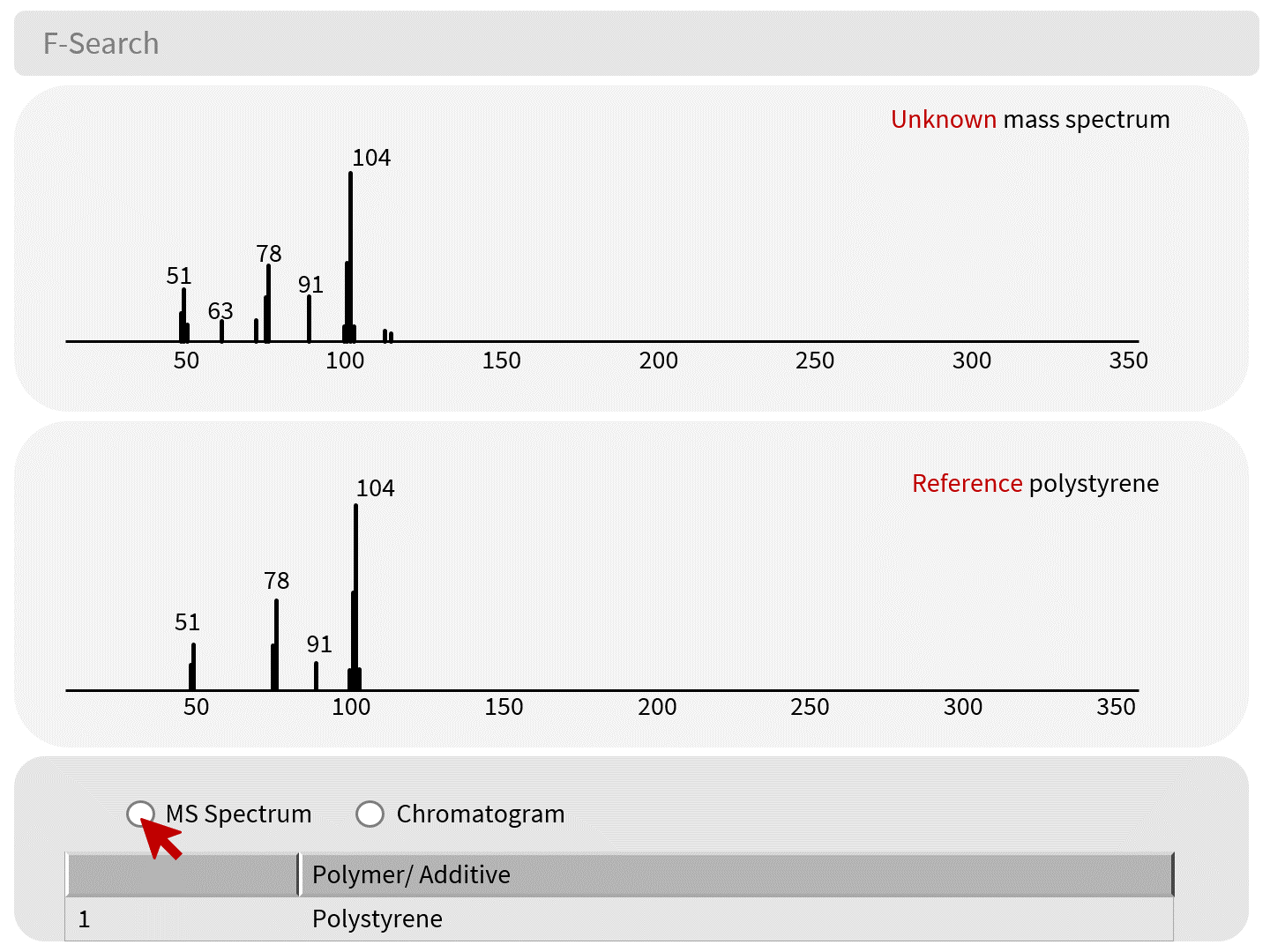
Quick Tip: You can toggle between the mass spectrum and chromatogram of a match as two ways to confirm the identify of your sample.
A lot of the work identifying peaks is passive (i.e. allowing the database to match unknowns for you). But what if you are looking for something specific?
Fortunately, libraries already have mass spectral information stored in their database, and all you do is look it up.
In the example below, we looked up a common polymer additive in the F-Search additive library. This additive pyrolyzes at 600 °C and contains a prominent peak with abundance in fragments 217 and 232.
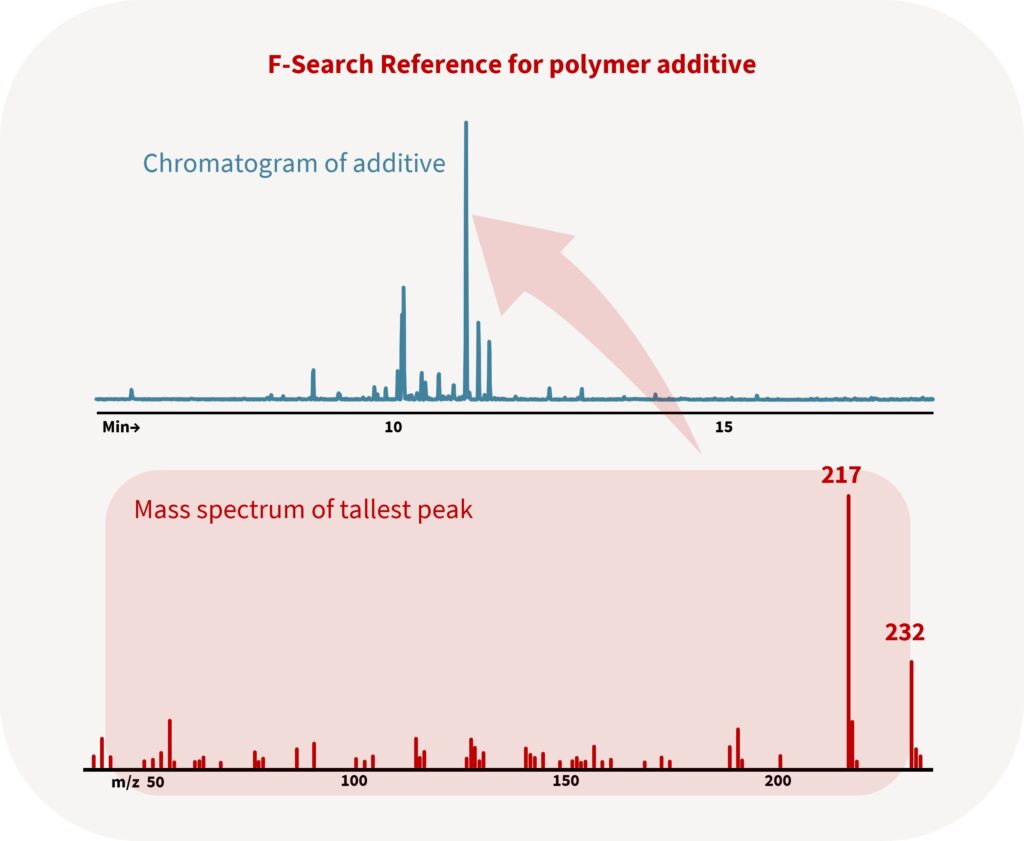
Unfortunately, at 600 °C we also have many peaks from the polypropylene backbone. Fortunately, extracting ions 217 and 232 from the polypropylene pyrogram show the additive is likely present in the polymer.
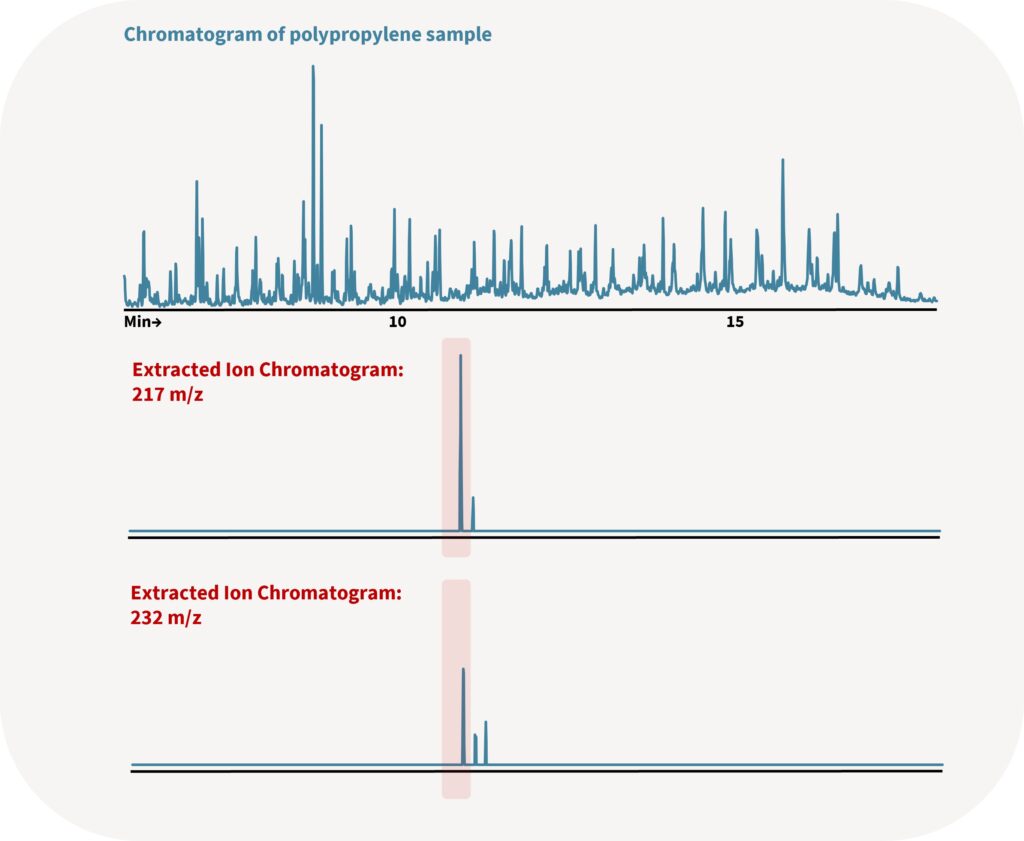
Quick Tip: You can search the many additives and polymers in the additive and polymer libraries and see pyrograms, thermograms and the instrument parameters under which they were obtained.
The F-Search system is an excellent tool for the pyrolysis scientist. It is mass spectral search software that identifies polymers and additives based on EGA thermograms and pyrograms obtained using a pyrolysis GC/MS system. The system consists of search software and four libraries. F-Search improves the reliability of analysis results by comparing data from different analysis methods. In addition, its patented search algorithm allows for reliable results even with data obtained by different analysis conditions.
Put our expertise, strategic partnerships, and technical support capabilities to work for you.
8301 New Trails Drive, Suite 100, The Woodlands, Texas 77381
© 2024 Quantum Analytics | A Black Forest Ventures Company | All Rights Reserved | Privacy Policy
Complete this form below to sign up and we will reach out to you with instructions
